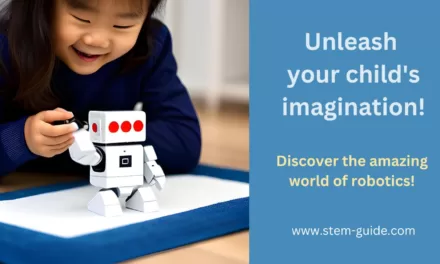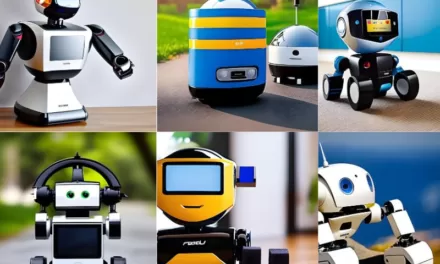Robot toys have become increasingly popular among kids in recent years. These interactive and programmable toys offer endless possibilities for play and learning. In this article, we will explore the world of robot toys for kids, their advantages, and how to choose the best robot toy for your child.
Types of Robot Toys
There are several types of robot toys available on the market, each with its unique features and functions. These include remote-controlled robots, programmable robots, interactive robots, modular robots, and educational robots.
Remote-Controlled Robots
Remote-controlled robots are operated by a handheld controller that allows kids to control the robot’s movements and actions. They are easy to use and suitable for younger children.
Programmable Robots
Programmable robots can be programmed to perform specific tasks or movements using a computer or mobile app. They are great for developing problem-solving skills and fostering creativity.
Interactive Robots
Interactive robots respond to voice commands and touch, making them ideal for kids who enjoy role-playing and imaginative play.
Modular Robots
Modular robots come in individual parts that can be assembled to create various shapes and forms. They encourage creativity and experimentation.
Educational Robots
Educational robots are designed to teach kids about science, technology, engineering, and math (STEM) concepts through interactive play.
Advantages of Robot Toys for Kids
Robot toys offer several benefits to kids, including developing problem-solving skills, enhancing creativity and imagination, improving hand-eye coordination, promoting STEM education, and providing entertainment and fun.
Developing Problem-Solving Skills
Robot toys challenge kids to solve problems, think critically, and use their logical reasoning skills to complete tasks.
Enhancing Creativity and Imagination
Robot toys encourage kids to use their creativity and imagination to build, program, and play.
Improving Hand-Eye Coordination
Robot toys require hand-eye coordination to operate, which improves dexterity and fine motor skills.
Promoting STEM Education
Robot toys introduce kids to STEM concepts, such as coding, robotics, and engineering, in a fun and interactive way. This can spark an interest in these fields and potentially lead to future career paths.
Providing Entertainment and Fun
Robot toys are not only educational but also entertaining and fun. Kids can enjoy hours of playtime while learning new skills and concepts.
Considerations When Choosing Robot Toys
When choosing a robot toy for your child, it is important to consider factors such as age appropriateness, skill level, interactivity and functionality, safety features, and price range.
Age Appropriateness
Make sure the robot toy is suitable for your child’s age and development level. Some toys may be too complex or advanced for younger children.
Skill Level
Consider your child’s skill level and interests when choosing a robot toy. Some toys may require prior knowledge or experience, while others are more beginner-friendly.
Interactivity and Functionality
Look for robot toys that offer a variety of interactive features and functions, such as voice commands, sensors, and lights. These can enhance the play experience and keep kids engaged.
Safety Features
Ensure that the robot toy has appropriate safety features, such as durable construction, non-toxic materials, and parental controls.
Price Range
Robot toys can range in price from affordable to expensive. Consider your budget and the value of the toy when making your decision.
Top Robot Toys for Kids in 2023
Here are some of the top robot toys for kids in 2023:
WowWee Robosapien – a programmable robot that can dance, sing, and perform over 60 different movements.
Anki Cozmo – an interactive robot that responds to voice commands and has a personality that evolves over time.
Sphero SPRK+ – a programmable robot ball that teaches kids coding and STEM skills.
Lego Boost Creative Toolbox – a modular robot kit that allows kids to build and program five different robots.
Ozobot Bit – a pocket-sized robot that teaches kids basic coding skills through color codes.
Robot Toys and Gender Stereotypes
Historically, toy marketing has been targeted toward specific gender stereotypes, with boys being encouraged to play with action figures and girls with dolls. However, there has been a recent push towards gender-neutral toys, including robot toys.
The History of Gender Bias in Toy Marketing
Gender bias in toy marketing has been a long-standing issue, with toys being marketed as either “for boys” or “for girls,” reinforcing traditional gender roles.
The Impact of Gender-Neutral Toys
Gender-neutral toys, such as robot toys, can break down these gender stereotypes and promote gender equality in playtime. They allow children to explore their interests and talents without feeling limited by their gender.
The Importance of Promoting Gender Equality in Toy Choices
However, Choosing gender-neutral toys like robot toys can help promote gender equality and empower children to pursue their interests regardless of their gender identity.
Robot Toys and the Future of Technology
Again, Robot toys are not only fun and educational plaything but also a glimpse into the future of technology and its potential impact on society.
The Role of Robotics in Society
Since, Robotics is a rapidly growing field with many potential applications in healthcare, manufacturing, and transportation. Robot toys can help introduce kids to this field and inspire them to pursue careers in STEM-related fields.
The Potential Benefits and Risks of AI
Again, Artificial intelligence (AI) is becoming increasingly integrated into our daily lives. Robot toys can help kids learn about the potential benefits and risks of AI and encourage responsible use of technology.
The Impact of Robot Toys on Future Generations
Similarly, Robot toys can help prepare the next generation for a future where robots and AI will play a significant role in society. By promoting interest and education in this field from an early age, we can ensure that future generations are equipped with the knowledge and skills needed to navigate this ever-evolving landscape.
Conclusion
Robot toys for kids are not just toys – they are educational tools that can inspire curiosity, creativity, and critical thinking. They can teach kids important STEM-related skills, promote gender equality in playtime, and provide a glimpse into the future of technology.
When choosing a robot toy for your child, it is important to consider factors such as age-appropriateness, skill level, interactivity and functionality, safety features, and price range. By selecting the right robot toy for your child, you can provide them with hours of entertainment while also laying the foundation for a future in STEM-related fields.



